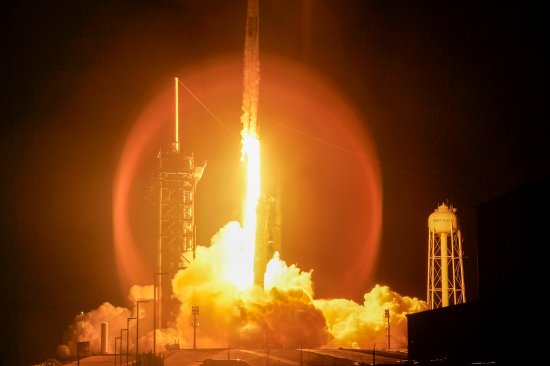
The all-civilian mission is set to achieve multiple firsts aboard the SpaceX Crew Dragon.
When astronaut Pete Conrad, the commander of NASA’s Gemini 11 mission, fired his spacecraft engine on Sept. 14, 1966 to climb to a record orbital altitude of 850 miles, he didn’t keep his enthusiasm contained.
“Whoop-de-doo!” the former Naval aviator exclaimed. “That’s the biggest thrill of my life. I’ve got India at the left window and Borneo under our nose.”
Conrad died in 1999, but his altitude record would stand for another 25 years. Until now. Yesterday, Sept. 10, it was broken, when the four crewmembers of the all-civilian Polaris Dawn mission flew their SpaceX Crew Dragon spacecraft up to a new high, or apogee, of 870 miles, venturing farther from Earth than any humans on a non-lunar journey have ever gone.
[time-brightcove not-tgx=”true”]“Achievement unlocked,” SpaceX posted on X, echoing the language of video games.
The new benchmark involved more than just record-setting; there was science too. The Earth is surrounded by twin bands of radiation, known as the Van Allen Belts, extending from a low of 400 miles above the planet to a high of 36,000 miles. The belts crackle with energy, subjecting a spacecraft—or an astronaut—to a potentially destructive bombardment of 20,000 highly charged electrons per second, per cubic centimeter. One of the goals of Polaris Dawn is to study both the Dragon and the crew in that perilous environment, to see if either one suffers any ill-effects, since trips to the moon and Mars require surfing through the Van Allen breakers. Mission commander Jared Isaacman—the billionaire founder of Shift4, an online payments company, who is bankrolling Polaris Dawn—and the three other astronauts aren’t taking undue chances: they will stay at their peak altitude for less than a day of their five-day mission, but that should be enough to gather at least some data from a battery of more than 40 medical experiments the astronauts will be conducting.
“Some of the research that we will do really digs into that radiation environment looking at how medications perform when exposed to that sort of radiation, looking at whether you can develop diagnostic technologies in that environment, such as X-ray images,” crew member and medical officer Anna Menon told TIME. “These sorts of learnings will be really strong tools as we pursue longer duration [flights] such as missions to Mars.”
The astronauts will undergo medical tests not just in space, but after they return to Earth. And the spacecraft itself, which is flying its third mission, will be subjected to similar examination. The Dragon is not designed to leave Earth orbit, but SpaceX’s next crewed vehicle, Starship, is being developed for lunar and Martian missions; what engineers learn about radiation exposure on the Dragon could be incorporated into the design of shielding for any follow-on ships.
Even bigger things are on tap for this week. On Thursday, Sept. 12, Isaacman and crewmate Sarah Gillis are scheduled to embark on the first extravehicular activity (EVA), or spacewalk, by civilian astronauts—an exercise that will be risky not just for them but for Menon and crewmate Scott Poteet, who will remain inside the spacecraft. Unlike the International Space Station, which has an airlock that allows the overall outpost to remain pressurized when astronauts venture out into space, Dragon has nothing more than a hatch that opens to the void. That means the vacuum inside the ship will match the vacuum outside, requiring all four astronauts to wear newly designed, especially robust spacesuits. SpaceX developed the suits not just for EVA, but also for exploring the surface of other worlds. This first flight for the new suits will help determine if they’re indeed suited for those later missions.
“There’s obviously a ton of learning that needs to happen through this first development, [including] how the suit operates and what mobility and dexterity and tactility and all those key suit metrics that we need to look into,” says Gillis.
“The smart engineers over at SpaceX built an EVA suit in less than a year,” adds Isaacman. “NASA has been working on this for quite some time and the cost usually goes into the billions. I can assure you that SpaceX and Polaris are not investing anything even close to that.”
The cost savings matter. NASA’s budget request for its Artemis lunar program is only $7.8 billion for fiscal 2025. That’s compared to the just shy of $29 billion (inflation-adjusted) cost of the Apollo program in 1966. Saving on suits could make a big difference when pockets are not nearly as deep as they were three generations ago.
Polaris Dawn will return to Earth no later than Sept. 15, but that won’t be all for the Polaris program. Isaacman is planning two more flights in the Polaris series—another one in a Dragon and the last on the maiden mission of the Starship. He named the program after our North Star, which is actually three stars, and he aims to honor that moniker with his own trio of cosmic journeys.